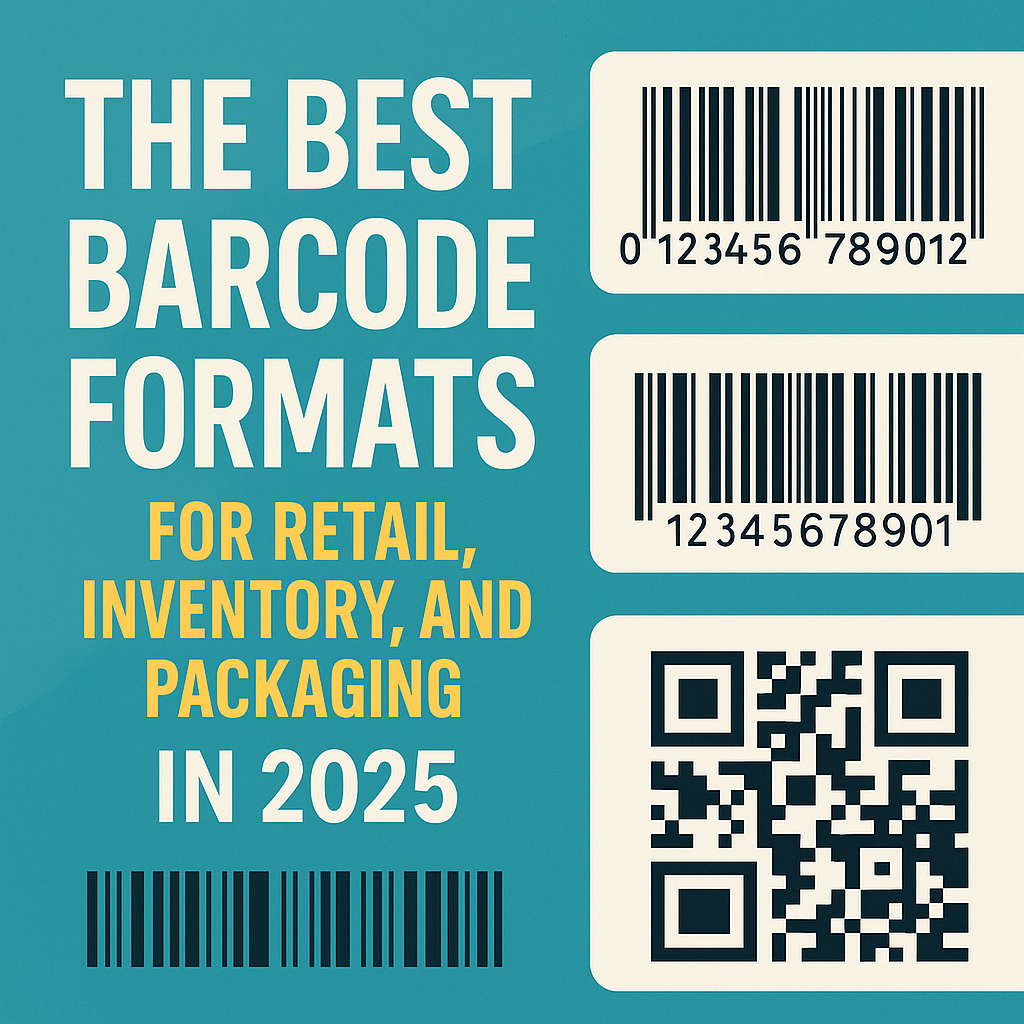
The Best Barcode Formats for Retail, Inventory, and Packaging in 2025
Created on 25 April, 2025 • 58 views • 2 minutes read
Explore the best barcode formats for retail, inventory, and product packaging. Learn which barcode types suit your business and how to choose the right one in 2025.
Barcodes are essential for modern business operations — from streamlining retail checkout to optimizing inventory management and enhancing product traceability. But with many barcode formats available, how do you choose the best one for your business needs in 2025?
In this article, we’ll break down the most widely used barcode types, their use cases, and tips for selecting the right format for your retail, logistics, or packaging strategy.
1. EAN-13 (European Article Number)
Best for: Retail products (especially in Europe)
- 13-digit numeric code
- Universally accepted in global retail
- Used on packaged goods, books, cosmetics, and more
Why use it: If you're selling products in supermarkets or online platforms like Amazon, EAN-13 is the industry standard.
2. UPC-A (Universal Product Code)
Best for: Retail in North America
- 12-digit numeric code
- Common in U.S. and Canadian retail systems
- Used on everything from groceries to electronics
Why use it: Preferred for North American retail environments and fully compatible with point-of-sale systems.
3. Code 128
Best for: Inventory, shipping, logistics
- Alphanumeric (includes letters and numbers)
- High data density — fits more info in a smaller space
- Used in supply chain, pallets, cartons, and warehouse systems
Why use it: Ideal for tracking packages, serial numbers, and logistics labels.
4. Code 39
Best for: Product labeling, internal use
- Supports letters, numbers, and some special characters
- Less compact than Code 128
- Often used in defense, automotive, and manufacturing
Why use it: Simpler to implement and good for internal tracking systems.
5. ITF-14 (Interleaved Two of Five)
Best for: Carton packaging, bulk shipping
- 14-digit numeric-only code
- Designed for outer cartons and shipping boxes
- Usually printed in large size for scanning from a distance
Why use it: Enables fast scanning of bulk shipments in warehouses.
6. GS1 DataBar
Best for: Fresh food, coupons, perishables
- Can include expiration dates, lot numbers, and weight
- Smaller than EAN/UPC, but holds more data
- Used in grocery and pharma industries
Why use it: Offers advanced traceability, great for regulated or perishable goods.
7. QR Codes (2D)
Best for: Smart packaging, marketing, traceability
- Can store URLs, product info, or serial numbers
- Easily scannable by smartphones
- Great for linking to online manuals, promotions, or feedback forms
Why use it: Combines product utility with customer engagement.
How to Choose the Right Barcode Format
When selecting a barcode type, consider:
- Your industry (retail, manufacturing, food, logistics)
- Data needs (numeric vs. alphanumeric, extra info)
- Scanning environment (point-of-sale vs. long-distance warehouse scan)
- Regional standards (EAN vs. UPC)
- Print size and quality
Final Thoughts
In 2025, the right barcode format can improve your efficiency, tracking, and customer experience. Whether you're labeling retail goods or managing complex supply chains, understanding the strengths of each barcode type helps you make smarter business decisions.
Ready to generate your barcodes online? 👉 Try the barcode generator at VSEO.xyz